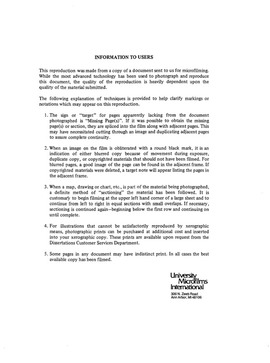| dc.contributor.author | Enouen, Paul William, | en_US |
| dc.date.accessioned | 2013-08-16T12:29:22Z | |
| dc.date.available | 2013-08-16T12:29:22Z | |
| dc.date.issued | 1985 | en_US |
| dc.identifier.uri | https://hdl.handle.net/11244/5341 | |
| dc.description.abstract | A difference in the treatment of the loads cannot be justified simply by their nature, because they are in fact the same loads. The transmission load is nothing more than the aggregate of the distribution load. Moreover, since the two parts are always connected, whatever has an impact on one will also affect the other. They do not operate independently. | en_US |
| dc.description.abstract | A power system naturally breaks down into two very distinct parts: transmission and distribution, and traditionally, the voltage problem has been separated the same way. In the transmission system it is referred to as a load flow problem, and in the distribution part it is called a voltage profile. In addition the loads are often treated differently. Transmission loads are usually considered to be constant power, and the equations which result are therefore non-linear. In the distribution portion the loads, though specified in terms of power, are sometimes handled as constant impedances, with linear equations. | en_US |
| dc.description.abstract | This work has produced a new model wherein a mesh transmission system is combined with a radial distribution system and they are solved simultaneously. A system reduction technique is used to eliminate part of the transmission system from consideration, and thereby keep the problem at a manageable size. The solution algorithm incorporates a voltage variable load model which approximates the behavior of real loads more nearly than the common representations. The model was successfully tested on the IEEE 118 bus test system, with a typical distribution system attached. | en_US |
| dc.description.abstract | In the few decades since its introduction the digital computer has found widespread application within the electric power industry. One of the more fruitful areas for its utilization has been in the determination of the steady state voltage conditions throughout the system. | en_US |
| dc.description.abstract | The model will ease the task of power system engineers by enabling them to analyze both parts of their systems at the same time, rather than sequentially as is now required. | en_US |
| dc.format.extent | vi, 128 leaves : | en_US |
| dc.subject | Engineering, Electronics and Electrical. | en_US |
| dc.subject | Electric power systems Load dispatching Mathematical models. | en_US |
| dc.title | A combined transmission--distribution load flow model employing system reduction and voltage variable load representation / | en_US |
| dc.type | Thesis | en_US |
| dc.thesis.degree | Ph.D. | en_US |
| dc.thesis.degreeDiscipline | School of Electrical and Computer Engineering | en_US |
| dc.note | Source: Dissertation Abstracts International, Volume: 46-08, Section: B, page: 2754. | en_US |
| ou.identifier | (UMI)AAI8523090 | en_US |
| ou.group | College of Engineering::School of Electrical and Computer Engineering | |
